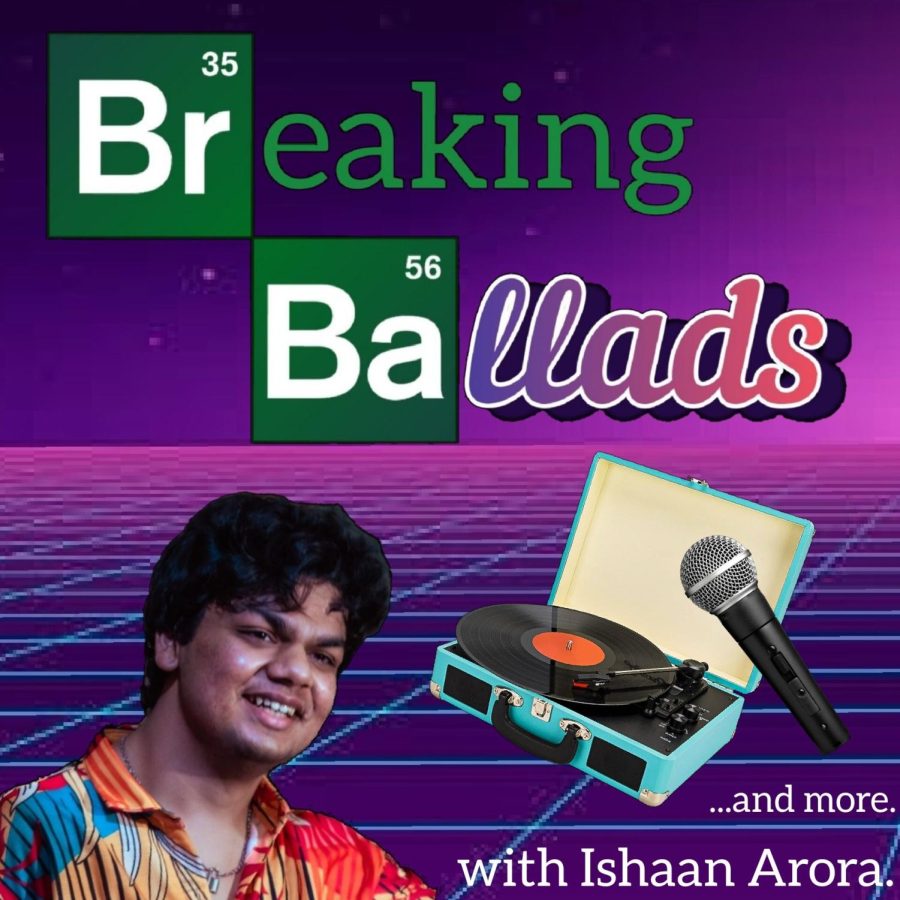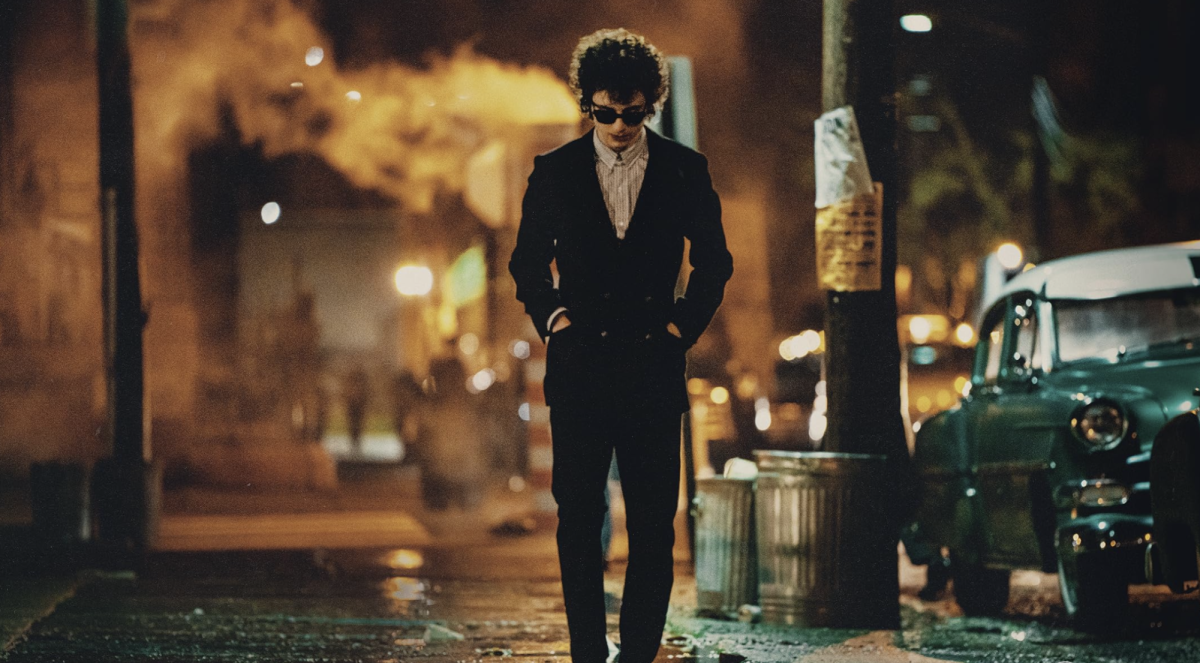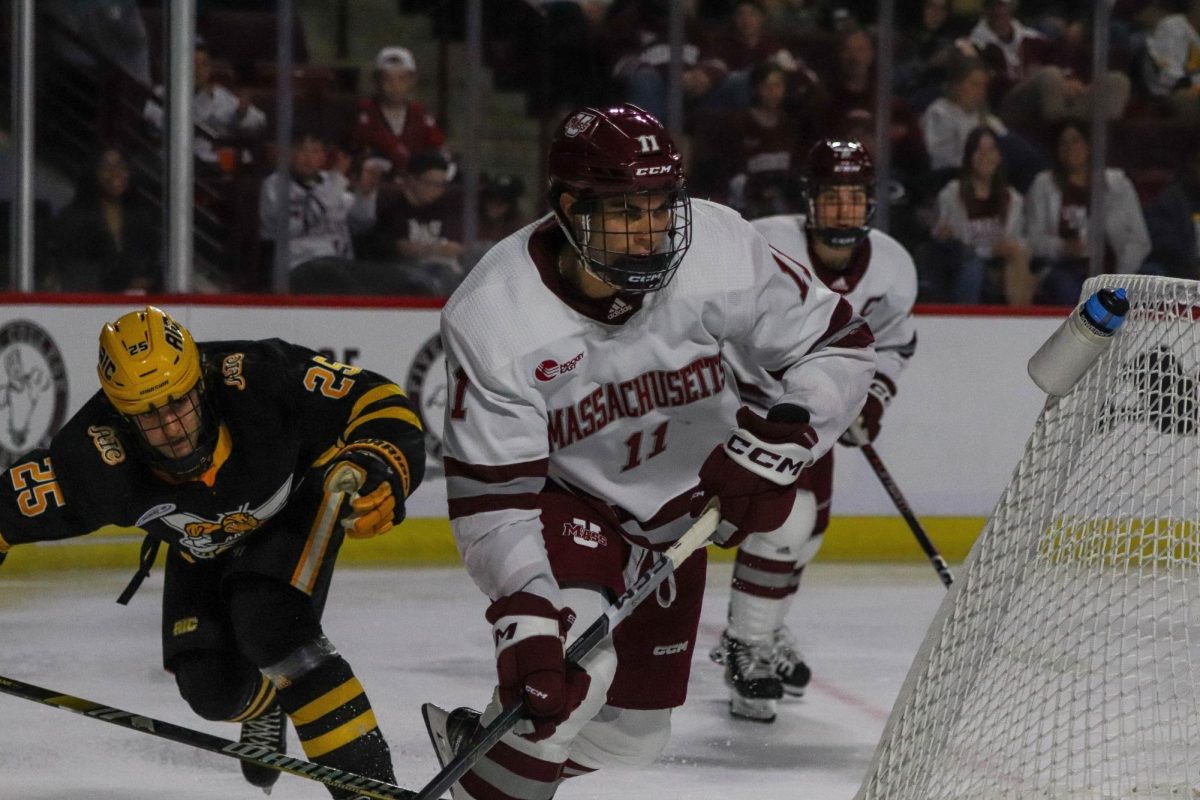Jay Watson, a multi-instrumentalist and member of the Australian psychedelic rock band Pond, also brings the kaleidoscopic works of Kevin Parker to live performance with Tame Impala.
Aside from these colorful projects, Jay is a successful solo artist under the alias GUM, as which he records, writes, produces and mixes his symphonically psychedelic albums. At only 30 years old, in mid-June, he released his fifth studio album “Out in The World” to widespread praise.
As the Skype tone first began to ring, all I could hear was a distinct “Hello?” in an all-too-familiar Australian accent. Jay, or GUM as he’s also commonly referred to, appeared on screen in a dimly lit room. He’d just awoken to face a barrage of questions from an elated fan and writer. A face I’ve seen countless times on the internet, in videos of live performances, on album covers and live in person was, at that moment, right in front of me — virtually.
It was 7 a.m. for Jay in Western Australia, who would have been between Tame Impala tour stints in Saint Paul, Minnesota on Friday if not for the COVID-19 pandemic continuing to ravage the United States. We connected across the world as Jay, like the rest of the world, stayed put in his home.
“Well, my situation is a bit different,” he said, “I live in Perth, Western Australia, and to be honest, there’s barely been any cases, so it’s been a couple months since the first case and now everything’s pretty much open again.” Jay remarked that, besides the interrupted tour, life for him had not been as affected by the pandemic as other people’s.

“It’s basically given me, like, a forced year off, which on the one hand is a real shame because we were gonna tour the new Tame album” he said. ”You know, Kev doesn’t get to promote that and play it to everyone around the world. We don’t get to do the initial victory lap.” But, he reassured, “we will [play it] at some point.”
Jay and the rest of Tame Impala were able to squeeze in three shows in southern California before they were, like many touring artists, forced to reluctantly cancel or postpone summer tour dates.
“The other shitty thing is just— your main source of income is gone for the year,” Jay added, highlighting a struggle countless touring artists are facing. “Now it’s just existing off of royalties and stuff like that.”
COVID-19 has put millions of people out of work and, for touring musicians, like all workers, the question of when they can get back lingers.
For Jay, there is a silver lining: “The good thing is, it’s like, I’ve kinda wanted a year off since I’ve started all this, yeah?”
“Since when?” I asked.
We both burst into laughter after Jay answered, “Since, like, 2008.”
After Parker released the Tame Impala EP in late 2008, live performances became a regular way of life for the group. While touring constantly since 2008, Jay had been regularly releasing music with Pond, and in 2014, began releasing his own solo work under the alias GUM on a nearly annual basis. With Tame Impala, Pond and solo performances interwoven throughout studio releases, it was clear that Jay had been quite busy.
“It’s a pretty intense way of life,” he said. “I come home [after a grueling stint of touring] and eat, like, toast every day. It sounds really insane, but you get sick of eating really rich food and touring all the time.”
A person can take only so much until sensory overload forces them to recharge before the next tour comes around, as Jay excitedly reminds me, “Of course, when you spend a bit of time at home, you’re desperate to go out because it’s so much fun, you know?”
For Jay, making music started “in school, back in my school band we would put a Dictaphone in the jam room and have jams and we’d burn them to CDs and put them on our iPods, pretend they were an EP.”
Since then, his musical career has morphed into something he can live comfortably on: his office, the music studio. His home office overflowing with studio equipment, microphones, old synthesizers and countless instruments. Few can lose themselves in music the way he can.
Along with remixing songs and producing Pond records, Jay has dedicated a sizable portion of his career to adapting Tame Impala studio records into living, breathing live performances. I saw the band last summer at Boston Calling and Madison Square Garden, and the spectacle of a show they put on for fans truly is sensory overload. Between gulps of confetti in your mouth during the drop in “Let it Happen”, to Kevin’s laser eyes piercing my soul during the thumping “Elephant”, to the dreamy and yearning trance of “Mind Mischief”, there’s a lot happening at a Tame Impala concert.

“Sometimes it’s just a matter of learning [a song] and playing it on a really simple sound,” as opposed to the multi-layered symphonic sounds the band is known for, making it easier to pinpoint Kevin’s chords and notes. “Sometimes it takes a lot of teaching and working on sculpting the sounds and the arrangements and stuff to make it sound correct,” he said about the process of getting the tracks concert-ready.
When the bass was his primary instrument during live shows, Jay relished in looking around, taking in the crowd and the music because, as he put it, one note is easier to hit than playing two, sometimes even three, synthesizers — as he does now for the current lineup of Tame Impala songs. It takes a lot more focus for him these days, but I’m sure he’ll sneak glances up from the keys when he can.
Before we dove into his new album, Jay talked about the projects this unexpected year off has enabled him to mess around with: “We’ve just finished Joe’s — from Pond, the guy with the big hair — [his] new solo record. We’re working on the new Pond one… It’s like going to an office every day, either one of the two studios we have between the band members.” At the start of the lockdown, the studio was inaccessible for Jay, Kevin and the rest of Pond, but now they flock to them to work on these various projects.
As for his solo work, Jay added, “I want to remaster the first two GUM albums to [repress] on vinyl. I’m gonna repress them all, but I want to make it sound, like, better.” This was a pleasant surprise.
“In the early days, I literally had just got Ableton [Live],” a common music production software, “and, you know, just chucked on an EQ or FX and just moved the parameters without having any idea.” After mixing the first album on tiny, low-quality miniature computer speakers, he described the mixing as too harsh in response to the thin sound which these too-small speakers monitored back to him. .
We jumped around topics, talking about his music-making techniques in general and the evolution of Pond, Tame Impala and GUM since late 2008. Then, Jay brought up an interesting point:
“People say Ableton has a sound, but I think that’s just the sound of the in-built plugins they use because they obviously have a sound… Sometimes I just try to get away from that by using third party plugins, but I still mostly use Ableton EQ and compressor.”
Ableton Live is used by many producers and artists, both A-list and those operating out of their bedroom.
“Well Ableton was pretty much invent— the thing is, we are bedroom producers, really,” He said, referring to himself, Kevin and other Pond members. “Like, I literally did the album [Out in The World] in my room.”
“The one you’re in now or a studio?” I asked.
“Like, one room away.” Jay points off screen to a makeshift production space.
“But, you know, the room sounds terrible, so I mixed [the album] on headphones. I mix all the GUM albums on headphones because I’ve never had a good enough space.”
“To let the music bounce around the room?” I questioned.
“Oh, the room sounds shitty and what you hear out of the speakers is not accurate. You get rid of the bass— that’s how I snuffed the first album up. Because what I was monitoring didn’t sound true” to what was being recorded, he said.
When it comes to recording an album, or even just a song, how the room is acoustically set up can make or break how an album is going to sound. If you cover the walls of a studio with sheet metal and mix the song in such a setting, in most cases, it’ll probably sound pretty horrendous. Treat a room with sound proofing pads — or, on a low budget, blankets — and the sound coming out of the speakers will be absorbed to produce a balanced, solid-sounding mix.
I asked Jay about the gear he used on “Out in The World” to find out how he created the out-of-this-world sound on his record.
“On the GUM one, I used lots of spring reverb for the first time,” he said. “You can kinda hear it all over.”
He searched for the words to describe it, calling the effect “extra, like mechanical or homemade or something. That kerch-che-kerk-kerk sound — like someone made it out of metal — I really love that, especially when making music in Ableton.”
Every artist is different. Some may have pressure from fans and label executives to pump out an album after some time has passed. Jay, on the other hand, lives undisturbed. No one really bothers him to make GUM records.
“I just make stuff constantly and then just package it together in a record,” he said.
Jay explained to me that he’s always working on projects, mentioning his next album is basically already written, but it’ll percolate in his head for a long time before tracks are actually laid down. Until then, he plans on tinkering with the various pieces of gear currently at his disposal.
As someone fascinated with synthesizers, I had to ask Jay, who has laid his fingers on a fair share of synths, to list some of his favorites. I made sure to clarify that I wasn’t interested in expensive equipment. .
“Well, the thing is about all those synths is, I bought all that stuff when it wasn’t really expensive. So, Juno was a run-of-the-mill synth 10 years ago. [Mine] was, like, $450 or something.”
We both laugh at the notion of a Juno being considered “run-of-the-mill.” Roland Juno synthesizers’ distinct sound has played a part in so many iconic records that the demand for them is high. Today, they can fetch prices in the thousands.

Softsynths, electronic renditions of actual synthesizers, find their way into many Pond and GUM albums because “I just find most modern ones sound like that to me.”
a semi-modular, monophonic synth that is primarily used for live shows with Pond. As you can imagine, after more than a decade of playing live shows and creating albums, Jay and his peers have acquired their fair share of vintage synthesizers and know their way around the various quirks that make each model unique.
“You can still buy old synths that are cheap,” Jay reassures me. “Like, there’s this one called the Poly 800 that’s never more than 400 bucks.”
“And it finds itself on Pond records?” I asked.
“We used it on new Pond. We used them live for a while. They’re pretty weird. They sound kinda cheap, but I really like them,” he said. “They’re sick, I highly recommend them. They’re still cheaper than some Behringer synth.”
“They [Behringer] do a great job with their reproductions, though.” I affirm.
“Yeah, they’re cool, I just don’t— I have an SH-1. I have the old synths,” Jay admitted.
“You have the real thing,” I said. “You have the stuff they’re trying to emulate.” This pulls a chuckle out of him.
“Which is a bit pretentious, but I’ve just been collecting over the years,” he said.
Now that the ingredients have been discussed at length, Jay was ready to talk about the final component — songwriting.
Every musician has a different way they “hear” their music in advance of laying down a track or even writing anything down. You may be like John Lennon, hearing the entire song “Nowhere Man” in his dreams, as legend has it, or like J Mascis, who noodles on his guitar until that perfect solo sticks. Jay is of the latter group.
“The idea will kinda be the whole song, you know what I mean? Or like a whole section comes at once,” he explained. “Like, an eight-chord progression — it doesn’t really just pop into my head. I’m not one of those kinds of people. Usually it’s just sitting around noodling.”
“By now I’m quite good [at instrumentals],” Jay admitted. “[But] I think my lyrics have gotten better. I think the music, you could argue, you know, that my chord progressions and melodies or whatever were better years ago. I think now I’m just really comfortable with making music confidently. Harmonic music. I feel like I could just make it for days and days and days [in] any style. Lyrics are another thing.”
Creating the instrumental, at this point in his career, comes naturally to Jay, but lyrics are always a beast of their own.
When writing, Jay asks himself: What do you want to say to the listener? How do you want to say it? In what tone should it be said?
When laying down vocals on GUM songs, he said, “I’ll never record gibberish. When I initially figure out the chord progression, I’ve made up the melodies and that’s gibberish.
“So, I’ll be recording it and I’ll have the whole melody in my head and then I’ll be like, ‘Alright, now it’s time to write some [lyrics] for it.’ Like, there’s not many times I’ll record a song and it’s just chords or something. With Pond, though, I’ll just record full instrumentals with no vocals because I’ll just give it to Nick and he’ll make stuff up.”
Some artists will have dozens, even hard drives full, of songs left over after recording an album. I asked Jay if he is such an artist who holds on to songs the world will never hear.
“Pond has a couple. I won’t bother recording if the initial idea isn’t inspiring to a certain degree,” he said. “There’s more stuff that’s on my iPhone’s voice memos that hasn’t come out.” Many artists, including Jay, use a recording app to capture an ever-fleeting sound, progression or melody buzzing in their brains.
When asked what was hardest about recording the album, Jay said, “I guess just finishing it. because you can just sit there and tinker with it forever and ever, really. You kinda just finish it when you’ve had enough with it. Like, you can’t be bothered doing any more of it.”
With deciding album covers, GUM has always grabbed the attention at fans, ever since “Delorean Highway” in 2014. “Out in The World” is no exception.
“Oh, it’s a parachute,” he answered, after I wondered out loud what the flying saucer on the cover could be. “With a smiley face on it. It’s just a photo I really like that my friend took. I like that it looks kind of old and kind of modern. The whole thing’s kinda weird colors, a bit brutal-looking because it’s gray.

“It’s always a mix of trying to have something that looks pretty and something that you think represents the record. The last Pond album is a good example It’s supposed to be like a, well, it’s not supposed to be anything but it could be a heat map, like a weather map. That kind of works for the whole record.”
As the interview drew to a close, I had to ask Jay one of the tackiest questions a journalist could ask a musician: “In one word, how would you describe this album?”
“Cathartic,” he answered after taking some time to think about it.
Keep that in mind when listening.
“Out in the World” by GUM is available now on streaming platforms. Look out for the vinyl reissues of “Delorean Highway” and “Glamorous Damage.”
Quinn He is the Arts Editor. He can be reached at [email protected].




















Adam Lechowicz • Jul 25, 2020 at 9:47 pm
Kind of unreal to see one of my favorite musicians interviewed by my college newspaper. Great work!